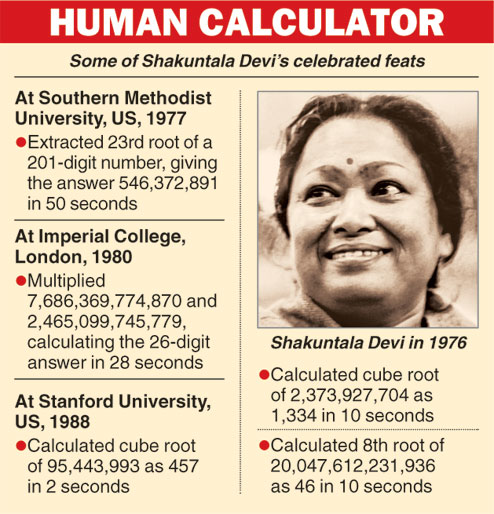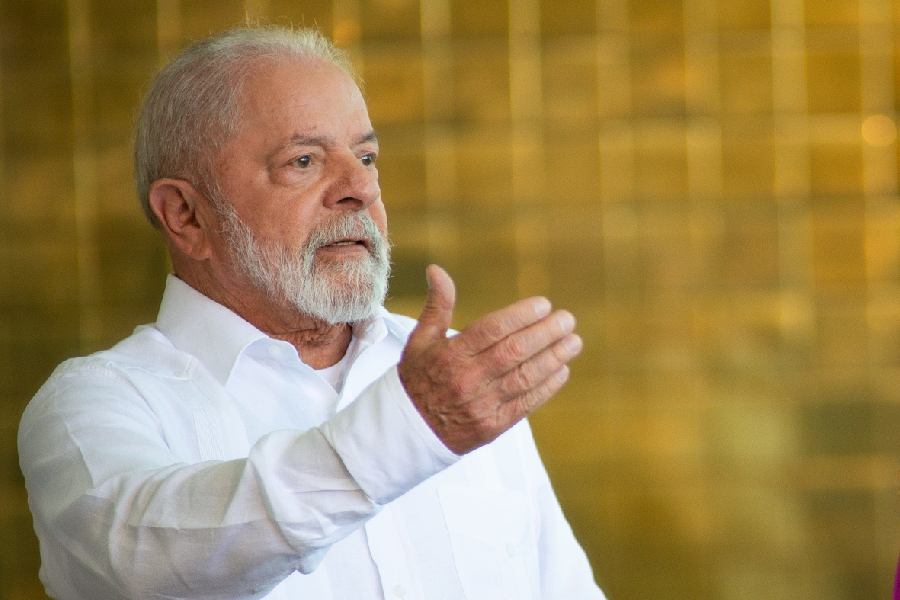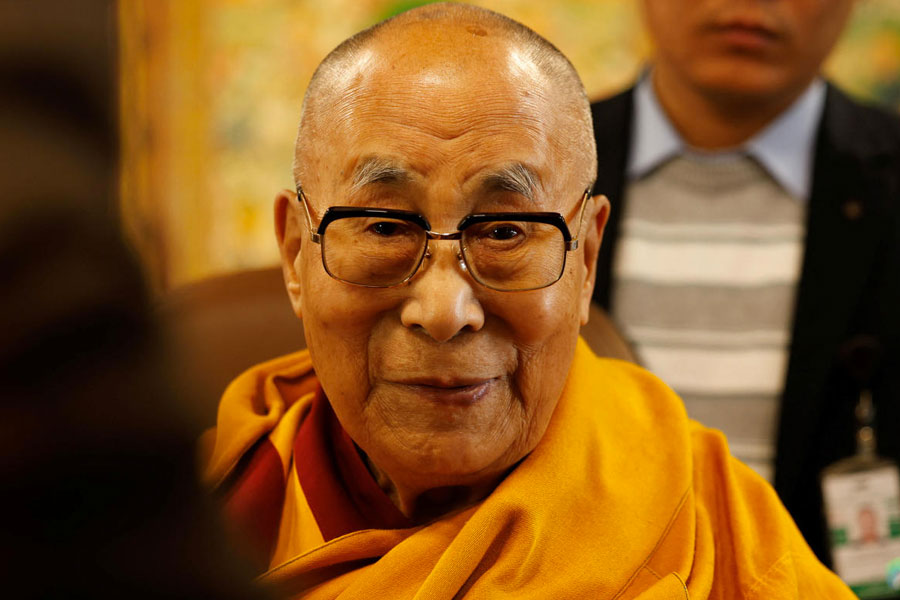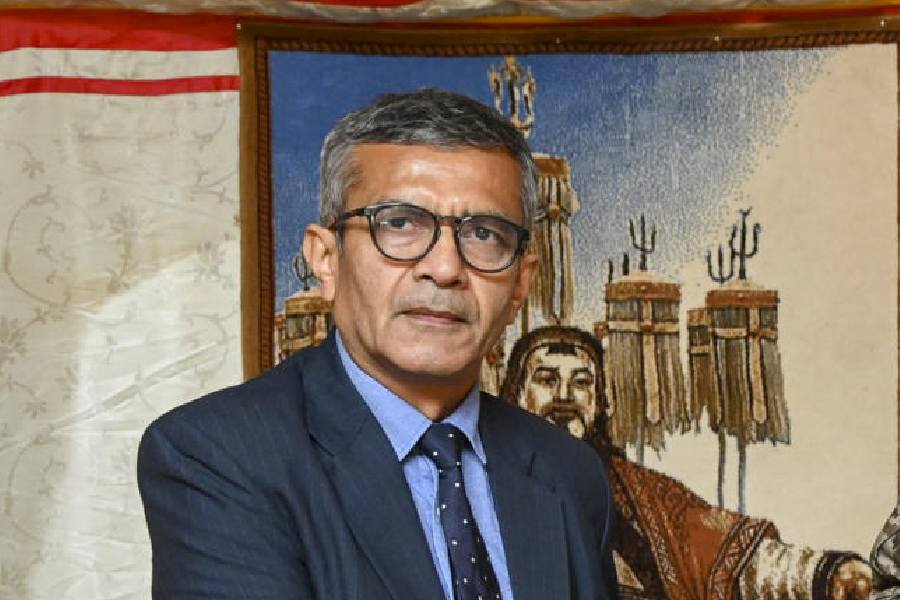 |
Shakuntala Devi, who amazed the world with her speed at mental calculation, at times beating computers while scientists struggled to explain her ability, died at a Bangalore hospital after a heart attack on Sunday morning. She was 83.
Devi was admitted to the hospital two weeks ago with respiratory problems and developed kidney and heart ailments there, said D.C. Shivadev, member of a trust in Devi’s name that runs an educational institution in Bangalore. She is survived by a daughter.
Devi’s father was a circus artiste who had rebelled against his Brahmin family’s tradition of becoming temple priests. Travelling with her father, little Shakuntala did not go to school and missed formal education. But she began to amaze audiences at age five by calculating cube roots.
At six, she stunned mathematicians at Mysore University. She began travelling the world in her adolescence, displaying her ability to multiply giant numbers and extract roots. Her 1980 feat at Imperial College, London, earned her a place in Guinness World Records. (See chart)
“Numbers have life, they’re not just symbols on paper,” she once said.
In 1988, she accepted an invite to visit the laboratory of US educational psychologist Arthur Jensen, who may have conducted the only formal research into the secret of her unique abilities. The University of California, Berkeley, professor watched her perform several mathematical tasks involving large numbers at Stanford University and put her under a series of tests.
At Stanford, volunteers wrote problems on a blackboard and Devi would turn around and stare at the problem and deliver her answers, always in less than a minute, Jensen said in a research report published in the journal Intelligence in 1990.
“Devi solved most of the problems faster than I was able to copy them in my notebook,” Jensen wrote. He assigned her two problems — the cube root of 61,629,875, and the seventh root of 170,859,375. Devi gave the correct answers — 395 and 15 — even before Jensen’s wife could start the stopwatch.
“It had taken much longer to work them with a calculator,” Jensen wrote.
The study sought to explore whether Devi’s feats owed to some unique innate ability to manipulate large numbers or to practice. Her reaction times on elementary cognitive tasks — such as picking the odd man out — were unexceptional and contrasted sharply with her speed at arithmetical calculations.
Jensen concluded that while Devi had to rely on working memory and long-term memory to solve problems, her long-term memory was “extremely well-stocked with highly over-learned and efficiently organised numerical information and various calculating algorithms (rules)”.
The study suggested Devi perceived large numbers differently from others. “For a calculating prodigy like Devi, the manipulation of numbers is apparently like a native language, whereas for most of us, arithmetic calculation is at best like the foreign language we learnt at school,” Jensen, who died last year, had written.
He believed that some “motivational factor” that drives and sustains “enormous and prolonged interest and practice” might explain Devi’s extreme skill levels.
Even her limitations in some sense displayed her skills. Assigned a problem whose answer was an irrational number — a number that cannot be expressed as a ratio of two non-zero integers — she dismissed it as a “wrong number”.
But, as Jensen pointed out, she had with just one glance recognised the answer as an irrational number.










